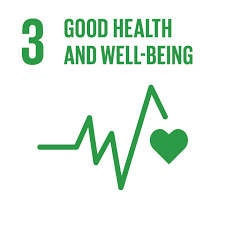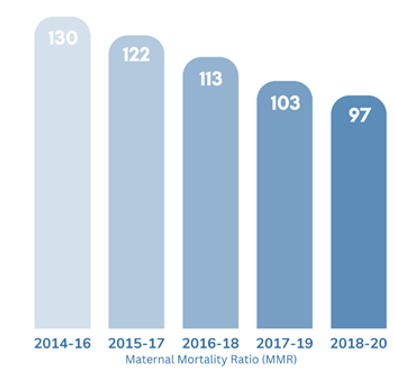Good Heath & Wellbeing
The United Nations Sustainable Development Goals (SDGs) are a set of 17 interconnected goals that aim to promote sustainable development and address global challenges such as poverty, inequality, climate change, and environmental degradation. The SDGs were adopted by all United Nations Member States in 2015 as part of the 2030 Agenda for Sustainable Development. The SDGs are a call to action for all countries, organizations, and individuals to work together to achieve a more sustainable and equitable world by 2030.
Talking about one of the SDGs to which we contribute directly, SDG 3, or Sustainable Development Goal 3 whose aim is to ensure healthy lives and promote well-being for all at all ages. Our existence and mission are directly aligned with the third global goal given by the United Nations. By providing various types of medical equipment, ColMed helps improve access to healthcare and save lives, especially in areas where there are limited resources or infrastructure.
Indicators of SDG 3 and our services that align with the particular indication.

SDG INDICATOR 3.1.1 Maternal Mortality Ratio
Definition: The maternal mortality ratio (MMR) is defined as the number of maternal deaths during a given time period per 100,000 live births during the same time period. It depicts the risk of maternal death relative to the number of live births and essentially captures the risk of death in a single pregnancy or a single live birth.
When talking about maternal mortality in India, it is a significant public health issue. According to the World Health Organization, the maternal mortality ratio (MMR) in India was 174 deaths per 100,000 live births in 2015. This is a significant reduction from the MMR of 556 deaths per 100,000 live births in 1990. Maternal Mortality Ratio (MMR) in India was exceptionally high in 1990 with 556 women dying during childbirth per hundred thousand live births. The global MMR at the time was much lower at 385.
ColMed's Contribution

Addressing Postpartum Haemorrhage
To address postpartum hemorrhage, the company has taken the lead in providing Dr. Burke’s ESM-UBT kit solutions at a fraction of the cost of solutions available to date. ColMed's vision is to have these kits available at delivery centers across the country to ensure prompt action.

Promoting Natural Birthing
ColMed works towards reducing the number of cesarean sections by actively managing prenatal monitoring and by providing access to water-birthing solutions across the country. The company has been providing cost-effective fetal dopplers and US FDA-approved fetal monitors for a long time.

Addressing the issue of Obstructed Labor
Obstructed labor had different maternal outcomes such as postpartum hemorrhage which can lead to death. For the issue of obstructed labor, the company has indigenized a vacuum-assisted delivery system that can be used at one-fourth of the current cost, and that too without the need for electricity or capex.
SDG INDICATOR 3.2.1: Under-5 mortality rate
Definition: Indicator 3.2. 1 is the under-5 mortality rate. The under-5 mortality rate measures the number of children per 1,000 live births who die before their 5th birthday. Goal: By 2030 Reduce child mortality to less than 25 deaths per 1,000 live births per year across all countries.
In India, the under-5 mortality rate has been decreasing in recent years, but it still remains relatively high compared to other countries. There are several reasons why the under-5 mortality rate is high in India. One major reason is a lack of access to quality healthcare and basic services, such as immunizations and nutrition.
SDG INDICATOR 3.4.1: Mortality rate attributed to cardiovascular disease, cancer, diabetes, or chronic respiratory disease
Definition: This indicator is defined as the percent of 30-year-old people who would die before their 70th birthday from cardiovascular diseases, cancer, diabetes, or chronic respiratory diseases, under the assumption that the experienced mortality rate does not change over time, excluding other causes of death such as accidents or HIV/AIDS. This indicator is calculated using the life table method.
Disease burden from non-communicable diseases (NCDs) among adults is rapidly increasing in developing countries due to aging. Cardiovascular diseases, cancer, diabetes, and chronic respiratory diseases are the four main causes of NCD burden. Measuring the risk of dying from these four major causes is important to assess the extent of the burden of premature mortality due to NCDs in a population.
SDG INDICATOR 3.7.1: The proportion of women of reproductive age (aged 15–49 years) who have their need for family planning satisfied with modern methods
Goal: By 2030, ensure universal access to sexual and reproductive healthcare services, including family planning.
According to data from the National Family Health Survey (NFHS-5), the "contraceptive prevalence rate" (CPR) for modern methods in India was 48.5% in 2019-2020. This means that just under half of the women in India who are in need of family planning are using modern methods.
SDG INDICATOR 3.8.1: Coverage of Essential Health Services
Definition: Indicator 3.8. 1 is for health service coverage and indicator 3.8. 2 focuses on health expenditures in relation to a household's budget to identify financial hardship caused by direct health care payments.
Goal:SDG Target 3.8 | Achieve universal health coverage, including financial risk protection, access to quality essential healthcare services, and access to safe, effective, quality, and affordable essential medicines and vaccines for all.